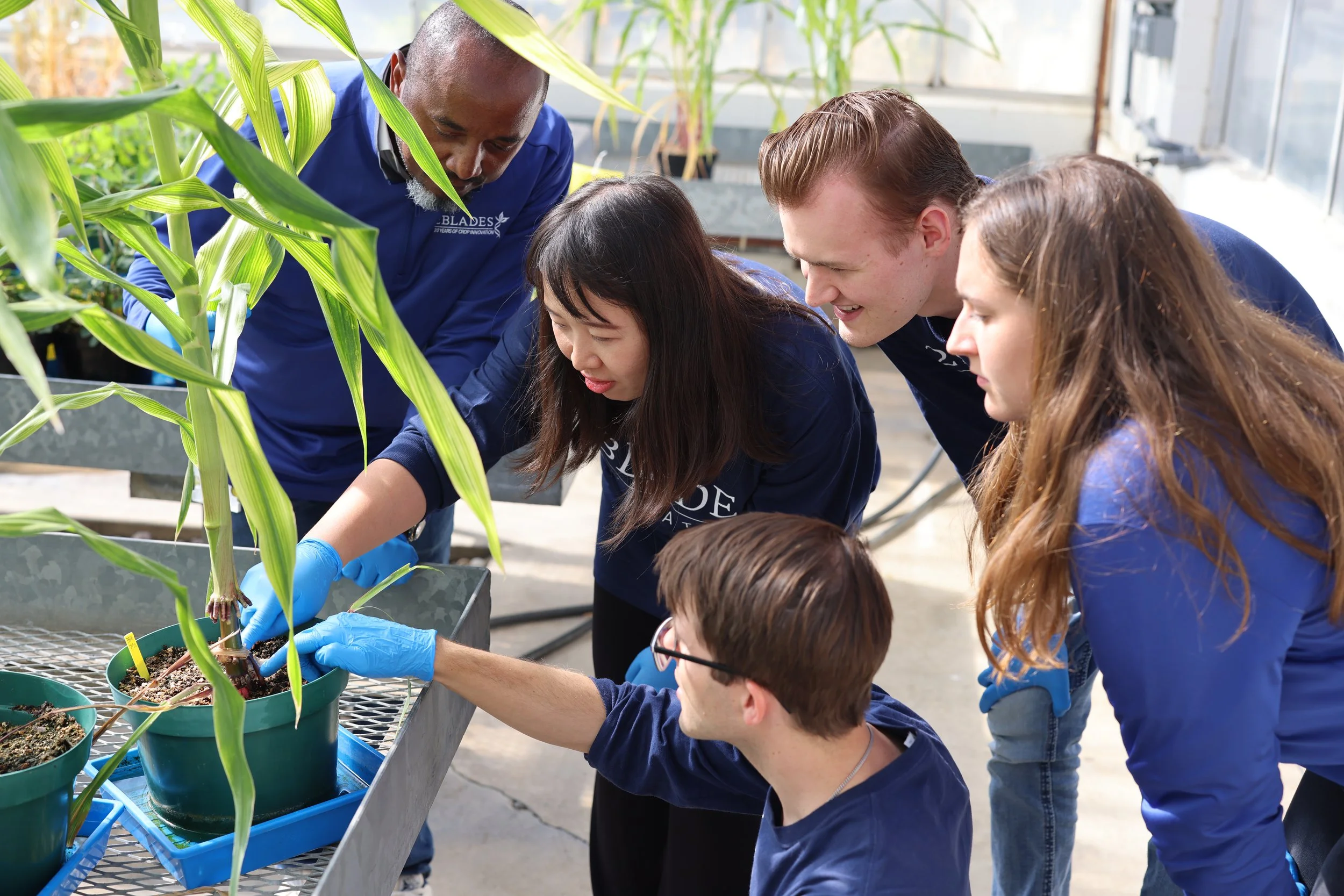
Corn
Corn is one of the most widely consumed crops worldwide, yet pathogenic fungi like Aspergillus and Fusarium cause substantial yield losses in addition to economic and health challenges from the poisonous mycotoxins they produce. This project is developing traits that enhance corn's resistance to mycotoxin-producing fungal pathogens.
At a Glance
Crop(s): Corn
Global Production: 1.2 billion metric tons
Disease: Ear and stalk rots, Fusarium graminearum and Aspergillus flavus
Region(s) Affected: All growing regions
Loss/Costs: Between $2 - $3 billion/yr in U.S. alone
Project Lead: Josiah Mutuku
Collaborators: University of Minnesota, United States Department of Agriculture (USDA), Bayer Crop Science, MN Corn Growers Association
Aspergillus ear rot caused by the fungus Aspergillus flavus
The Challenge
Ear rots of corn are economically important mid- to late-season diseases that are caused by multiple fungal pathogens. Few effective treatment options are available, and genetic resistance is limited. In addition to the yield losses caused by these fungi, they also produce compounds called mycotoxins that are toxic to humans and livestock.
Mycotoxin-contaminated grain must be diluted in the case of low levels of contamination, or removed from the food supply in the case of high levels. In developing countries, mycotoxin screening is generally not available, and consumption of contaminated grain causes human health issues such as stunting in children, cancer in adults, and even death. Corn plants that are stressed by other diseases, drought, heat stress or poor nutrition are more vulnerable to infection. Fungicide treatments are generally not effective.
The Strategy
Building from earlier programs developed by the 2Blades Group at The Sainsbury Laboratory, one in collaboration with Bayer Crop Science and one in collaboration with Kaneka, we are testing our immune receptor discovery platforms to identify resistance to mycotoxigenic fungi that cause ear and stalk rot.
We are focusing our efforts on the two most notorious toxin-producing fungi – Fusarium and Aspergillus – using multiple approaches to thwart their stealthy growth habits. By preventing infection in corn, we can protect not only corn harvests, but also the people and animals who are sickened by mycotoxins.
2Blades team member, Mengying Wang, tagging Fusarium-infected corn plants and collecting leaf tissue for genotyping.
The Science
Infection of ears generally occurs through wounds or through the silks. Ear rots caused by Fusarium graminearum and Aspergillus flavus produce widespread and highly toxic mycotoxins. The most important of these are deoxynivalenol (DON - or vomitoxin - produced by F. graminearum) and aflatoxin (produced by A. flavus).
We are exploring a range of strategies to build plant resistance to these devastating diseases, including using our proprietary library of receptor genes and other novel approaches.





